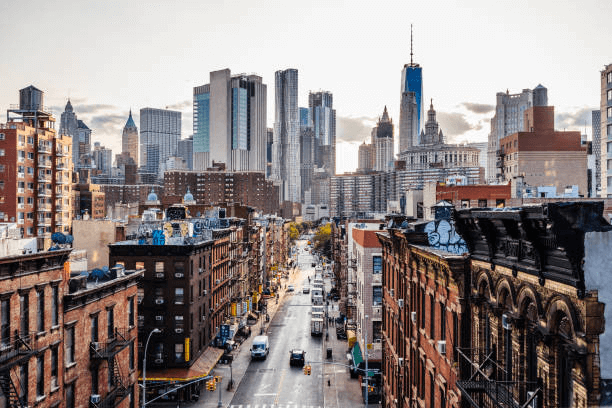New York City's Apartment Vacancy Plunges to 1.4%, A 50-Year Low Amidst Market Shifts

New York City has long been renowned for its bustling real estate market, with demand for housing perpetually high in the city that never sleeps. However, recent data has revealed a striking trend: apartment vacancies in the Big Apple have plummeted to a mere 1.4%, marking the lowest level in over 50 years. This significant drop in vacancy rates has profound implications for both renters and landlords, reshaping the landscape of New York City's housing market.
The dwindling vacancy rate underscores the enduring allure of New York City as a residential destination, despite the challenges posed by the COVID-19 pandemic and economic uncertainties. Despite initial concerns about the exodus of residents during the height of the pandemic, the city has demonstrated remarkable resilience, with demand for housing bouncing back stronger than ever.
Several factors have contributed to this historic low in apartment vacancies. Firstly, the gradual reopening of the city's economy has spurred renewed interest in urban living, as residents seek to once again immerse themselves in the vibrant culture, amenities, and opportunities that New York City has to offer. Additionally, the resumption of in-person work and social activities has prompted many individuals to reconsider suburban or remote living arrangements in favor of the convenience and excitement of city life.
The scarcity of available housing stock has intensified competition among prospective renters, driving down vacancy rates even further. Limited inventory, coupled with robust demand, has created a landlord's market, with landlords enjoying increased bargaining power and the ability to command higher rents.
The tightening housing market poses challenges, particularly for those on modest incomes or searching for affordable housing options. With fewer vacancies and heightened competition, finding suitable housing within budgetary constraints becomes increasingly challenging. Many renters may find themselves facing steep rents, limited choices, or the need to compromise on location or amenities.

Landlords stand to benefit from the current market conditions, with reduced vacancy rates translating into higher occupancy levels and increased rental income. The tightening rental market affords landlords greater leverage in negotiating lease terms and rental rates, enabling them to capitalize on the strong demand for housing in New York City.
It is essential to recognize the broader implications of the city's historically low vacancy rates. A housing market characterized by tight inventory and soaring rents risks exacerbating affordability challenges and widening socioeconomic disparities. As rents escalate, low- and moderate-income residents may find themselves increasingly priced out of the city, contributing to gentrification and displacement.
Addressing the issue of housing affordability requires a multifaceted approach, encompassing policies to promote the construction of affordable housing, strengthen tenant protections, and support initiatives to expand access to homeownership and rental assistance programs.
New York City's record-low apartment vacancy rates underscore the enduring appeal of urban living and the resilience of the city's housing market. While landlords may celebrate the tightening rental market, renters face mounting challenges in securing affordable housing in a competitive environment. As the city navigates the post-pandemic recovery, addressing housing affordability will remain a pressing priority to ensure that New York City remains a diverse, inclusive, and vibrant place to call home.




